DROPS Alpaca Bouclé
Soft, light and full of loops!
from:
8BGN
per 50 g
Content: 80% Alpaca, 15% Wool, 5% Polyamide
Yarn Group:
C (16 - 19 stitches)
/ 10 ply / aran / worsted
Weight/length: 50 g = approx 140 m
Recommended needle size: 5 mm
Knitting tension: 10 x 10 cm = 17 sts x 22 rows
Care: Hand Wash, max 30°C / Dry Flat / Feltable
Superwash: no
Made in: Peru
Raw material origin: Alpaca and wool from South America, polyamide from Germany
This yarn has an Oeko-Tex® certification (certificate number 23.HPE.36896), Standard 100, Class II from the Hohenstein Institute. This means that is has been tested for harmful substances and is considered safe in human-ecological terms. Class II means the yarn is suitable to come in direct contact with the skin to a large extent, such as blouses, shirts, mattresses, etc.
DROPS Alpaca Bouclé is a lovely effect yarn spun from 2 strands of superfine alpaca with a core of wool and polyamide that gives the yarn its strength. Its natural fibers are untreated, which means that they are only washed and not exposed to any chemical treatment prior to the dyeing. This highlights the fiber’s natural properties, while it also provides a better shape and texture quality.
“Bouclé” is the French word for a loop and it refers to the number of small loops of pure alpaca that give the yarn its characteristic look and that enhance the softness of the fiber. Garments made in DROPS Alpaca Bouclé are light and very fluffy.
Read more about our products' sustainability here
Please be aware that the colours shown may vary from screen to screen in the same way that shades may vary slightly from dye lot to dye lot.
How do I care for this yarn?

Hand Wash, max 30°C / Dry Flat
First of all, consider just airing the garment, instead of washing it. If you still desire to wash it, here are some guidelines:
- Hand wash at 30ºC - separately - with wool detergent without enzymes or optical brighteners.
- Don’t let the garment soak. Move the garment gently back and forth, do not rub or squeeze it.
- Rinse the garment until the rinse water is completely clear, making sure the water temperature stays uniform.
- Do a light centrifugation of the garment (about 800rpm), choosing a program that DOES NOT take in water at the start. Or press carefully the water out of the garment with a dry towel. The garment shouldn’t be twisted or rolled.
- To dry the garment, shape it and lay it flat - do not hang - ideally on a warm bathroom floor or on top of a drying rack in a room with good air circulation. Never dry the garment in direct sunlight.
- Don’t tumble dry.
Note: If you are washing a project made with this yarn combined with another, the general guideline is to follow the washing instructions for the most delicate of the yarns you are working with.
Thinking about felting this yarn?
See how this yarn looks before and after felting:
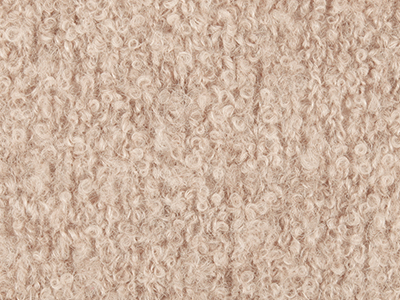
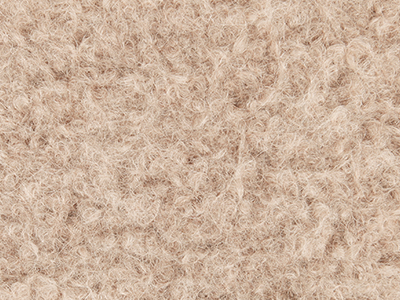
Needles: 5.50 mm
Before: 16 sts x 21 rows
After: 21 sts x 32 rows
Do you have a question about this yarn?
See a list of frequently asked questions (FAQ) about our yarns.
1) What type of fibers make the DROPS yarns?
Yarn can be made from a large number of natural and synthetic fibers. DROPS carries mainly yarns made from wool, cotton, alpaca, linen, mohair and silk. Each fiber type has its own qualities, and they are often mixed to take advantage of the best properties of each one. Coarse yarn has the advantage of being stronger and more durable, and finer fibers offer more softness and comfort. Here a bit about the main fibers we carry:
Alpaca:
Alpaca fleece is the natural fiber harvested from an alpaca, and it is similar in structure to sheep wool fiber. Its softness comes from the small diameter of the fiber, similar to merino wool. It is a soft, durable, luxurious and silky natural fiber. Yarn made from alpaca fibers does not felt or pill easily, and it can be light or heavy in weight, depending on how it is spun. While similar to sheep’s wool, it is warmer, not prickly, and has no lanolin, which makes it hypoallergenic. Alpacas come in 22 natural colors, with more than 300 shades from a true-blue black through browns-black, browns, white, silver and rose-greys.
Mohair:
This fiber comes from the Angora goats, and it's considered a luxury fiber. Mohair yarn is warm as wool, but much lighter in weight; it is durable, dyes well and does not felt easily. Mohair fibers have also a distinctive luster created by the way they reflect light. Despite being a hard fiber, mohair is usually spun into a very fluffy yarn, resulting in airy and lustrous garments.
Wool:
The wool fibers come from the skin of sheep and are relatively coarse fibers. Two striking characteristics of wool are its susceptibility to heat and its felting property, which is caused by the scales on the surface. Depending upon the breed of sheep, the appearance of the wool varies.
Wool from Merino sheep is considered the finest type of wool, having as characteristics that is finely crimped and soft. All the Merino wool in the DROPS yarns has its origins in South America, coming from sheep that have not been subject to Mulesing.
Pure new wool is wool made directly from animal fleece, and not recycled from existing wool garments.
Machine washable wool is wool treated chemically to minimize the outer fuzzy layer of the fibers, and be therefore fitable for machine wash (see Superwash).
Silk:
The silk fiber is a fine continuous fiber produced from the cocoon of a moth caterpillar known as the silkworm. While silkworm is cultivated, the wild or tussah silk is obtained from uncultivated silkworm cocoons. Silk fiber is one of the strongest natural fibers and makes a wonderful knitting yarn. It blends really well with other fibers, especially wool. Silk also dyes beautifully with natural dyes.
Vegetable fibers:
There are several varieties of vegetable fibers, found in the cell walls of plants or vegetables. Of all the varieties, two are recognized as major knitted or textile fibers. They are cotton and linen.
Cotton is the fiber surrounding the seeds in a cotton pod, and it is almost pure cellulose. Cotton is usually white in color but there are green and brown varieties as well. The cotton fiber is most often spun into yarn or thread and used to make a soft, breathable textile that is good for summer clothing and accessories, making a weaker yarn than silk or linen but stronger than wool.
Mercerized cotton is cotton that has been through a mercerization treatment. This treatment gives cotton fabrics and threads a lustrous yarn that is more lustrous than conventional cotton. It is also stronger, takes dye a little more readily, makes the yarn more resistant to mildew and reduces lint. It also may not shrink or lose its shape as much as "regular" cotton.
Linen is a fiber derived from the stalk of the flax plant that is durable and stronger than any other fiber. The linen fiber is relatively soft, straight and lustrous and becomes more beautiful with age. Linen is more comfortable to wear in hot temperatures than cotton, due to the fact that it absorbs moisture better and dries more quickly.
Other materials used in our yarns include synthetic fibers such as acrylic, viscose, polyamide (nylon) and polyester. These fibers are used mostly to give strength to a yarn (like our sock yarn, DROPS Fabel) or a special kind of structure (like our blown yarn, DROPS Air).
The polyamide fibre, commonly known as nylon, is very strong, durable, lightweight, easy to care for (can be machine washed and dried), and elastic, which makes it perfect for blending with other fibres to produce hard-wearing yarns like sock yarn.
Compared to polyester, polyamide is softer and more flexible, but it also absorbs more water and dries slower.
3) What type of information can I find on the DROPS yarn labels?
All DROPS yarn labels include information about fiber content (wool, cotton, etc.), weight in grams and ounces, length in meters and yards, washing instructions and symbols (explained here), color number, dye lot number and yarn group information.
4) What are the DROPS yarn groups?
All DROPS yarns are classified into 6 different thickness groups (A to F). Yarns in a same group have similar knitting tension/gauge, and can therefore be interchanged in patterns; however the length may be different, so when substituting always calculate the amount of meters/yards needed for the pattern to know the amount of yarn you need to get.
5) Can I use a different yarn than the one mentioned in the pattern?
Yes, as long as the yarn can be worked in the same knitting tension/gauge. Always swatch to make sure you get the same number of stitches in width and rows in height as given in the pattern.
Remember that different yarns with different textures, will give the garment different looks. The yardage/length may also be different, so when substituting always calculate the number of yards needed, in order to know the amount of yarn you need.
Read more about how to calculate the amount of an alternative yarn - and how to replace 1 thread of a yarn with 2 or more of another, here.
6) What does it mean when a yarn is “Superwash”?
A superwash wool is a special wool product that has been treated or processed in a way that allows it to be machine washable. Many people are afraid to work with wool because it is so easy to shrink (though some shrink wool on purpose) and superwash wool can allow them to work with great fibers without worry. (Read more here).
7) What does “Oeko-Tex® certified” means?
The Oeko-Tex® Standard 100 was introduced at the beginning of the 1990s as a response to the needs of the general public for textiles which posed no risk to health. The Oeko-Tex® Standard 100 is a globally uniform testing and certification system for textile raw materials, intermediate and end products at all stages of production. The test for harmful substances comprise substances which are prohibited or regulated by law, chemicals which are known to be harmful to health, and parameters which are included as a precautionary measure to safeguard health.
For more info go to www.oeko-tex.com
10) How accurate are the colours on the shade cards online?
When obtaining images for the shade card, we do our best to achieve the highest level of color accuracy. Unfortunately, we cannot guarantee how images will appear on your computer screen. Every monitor displays color differently, some colors might look darker than they really are, and some colors might be more saturated on some screens. If you experience that many of the yarn colors looks different on your screen than the actual color of the skeins, you can adjust the setting on your monitor.
11) What is a micron? What does super fine / extra fine mean?
The fineness of yarn fibers is measured in microns (thousands of millimeters). Super fine alpaca wool is 26-28 microns. Fine merino wool is less than 21.5 microns and extra fine merino is under 19.5 microns. The less microns the softer and more delicate a quality can be, the more microns the more hard wear the quality will be.
The reason why the microns in a yarn’s fibers are important is that the yarn will eventually become something else, and how delicate or coarse a yarn is will determine in part what we use it for. That’s why we recommend the softest yarns (like DROPS Baby Merino) for baby clothing, or why we choose to use a more hard wear yarn like DROPS Snow, for a seating pad or slipper.
12) Why are the colours in my skeins of print yarn different?
The reason why two skeins of a same print yarn look different can be 1) that both skeins are part of different dye lots; 2) that the skeins have been dyed using a technique called "magic print" (the one used for example in DROPS Delight), which provides unique patterns and smooth colour transitions to each skein, meaning also that within one dye lot, lighter or darker varieties might appear. This is no fault or defect, but part of the yarn's character.
13) My store doesn’t have the colour I want, what can I do?
If your DROPS store doesn’t have the yarn colour you want, try contacting a DROPS Super Store (the ones with the golden badges) - they will make sure to get a hold of the colour even if they don’t have it in stock themselves. See a list of all DROPS stores here.
14) Where can I find a specific dye lot of a colour?
Always try contacting your DROPS store first. If they do not have the dye lot you want we recommend you to ask other knitters and crocheters in the DROPS Workshop in Facebook or Ravelry, which may have the dye lot in their stash and might be willing to part from it.
Yarn sheds because there's not enough twist to hold all of the fibers together. All yarns have excess fibers (from production) that might come off as lint or shedding, in varied degrees that depend on how the yarn is spun. Brushed yarns ("hairier" yarns) like DROPS Melody, have more of these loose fibers than other yarns, and therefore shed more. Shedding also depends on what is worn under or over the garment, and whether this pulls at the yarn fibers. It’s therefore not possible to guarantee that there will be no shedding.
Below are some tips on how to get the best result when working with hairier yarns:
- When the garment is finished (before you wash it) shake it vigorously so the looser hairs come off. NOTE: do NOT use a lint roller, brush or any method that pulls at the yarn.
- Place the garment in a plastic bag and put it in your freezer - the temperature will cause the fibers to become less attached to each other, and excess fibers will come off easier. Leave in the freezer for a few hours before taking it out and shaking it again.
- Wash the garment according to the instructions on the yarn label. Garments worked with hairier yarns usually need to be shaken once dry after washing, so that the hairs rise and any excess fibers can come off.
Pilling is a natural process that happens to even the most exclusive of fibers. It's a natural sign of wear and tear that is hard to avoid, and that is most visible in high friction areas of your garment like a sweater's arms and cuffs.
You can make your garment look as new by removing the pilling, using a fabric comb or a pill/lint remover.
How can I replace this yarn?
If you are looking to replace this yarn with another DROPS yarn, you can use another yarn within the same yarn group, or try our yarn converter!
Other yarns in Yarn Group C
Read more about replacing yarn.Have a problem with the DROPS yarn you purchased?
When you purchase yarn from the shade cards or patterns on our site, you are not buying directly from DROPS but from one of the hundreds of DROPS stores around the world. It is therefore important that you take contact with the DROPS store where you bought the yarn, and that you save the labels of all the skeins you purchased (they are your warranty).
The DROPS store you contact will assist you and escalate the claim if necessary. Find a list of DROPS stores here.
Comments / Questions (127)
![]() Carmen wrote:
Carmen wrote:
Ik wil graag een knuffel breien met een pluizige vacht. Kan ik dit garen gebruiken hiervoor of breid het 'open' waardoor ik het niet kan vullen met volwol?
08.11.2015 - 20:18DROPS Design answered:
Hoi Carmen. Dit garen is prima geschikt. Je kan altijd op kleinere naalden breien om het vaster te maken.
09.11.2015 kl. 11:36
![]() Conny wrote:
Conny wrote:
Prikt d bouclé als je hem draagt ?
09.09.2015 - 21:20DROPS Design answered:
Hoi Conny, hij is heel lekker zacht, maar wil je zeker zijn, dan probeer om naar een winkel te gaan om te voelen.
11.09.2015 kl. 13:40
![]() May-Liss Norbye wrote:
May-Liss Norbye wrote:
Jeg ønsker å strikke modell EE-202. Den er opprinnelig strikket i drops puddel. Da dette garnet har gått ut lurer jeg på om jeg kan bruke alpaca boucle isteden. Da evt legge dobbelt. May-Liss
30.06.2015 - 02:39DROPS Design answered:
Hei May-Liss. Ja, du kan sagtens bruge dobbelt Alpaca Bouclé. God fornöjelse
01.07.2015 kl. 10:17
![]() Jennifer wrote:
Jennifer wrote:
Beautiful result. Once you have this wool on your body you don't want to take it off, it's so soft and cuddly.
10.06.2015 - 17:10
![]() Charlotte wrote:
Charlotte wrote:
Er det virkelig korrekt,at jeres Alpakka Boucle' kan filtes? Garnet indeholder jo polyamid,hvilket vel påvirker filteprocessen?
31.03.2015 - 00:27DROPS Design answered:
Hej Charlotte, du kan sagtens filte Alpaca Bouclé fordi den hovedsageligt indeholder uld. Vil du vaere sikker paa hvordan den reagerer paa filtningen, saa strik en pröve og filt den.
08.04.2015 kl. 12:43
![]() Iris wrote:
Iris wrote:
It would be great if there were more colours, because I really like this yarn.
25.03.2015 - 15:16
![]() Ashley Versmissen wrote:
Ashley Versmissen wrote:
Is het ook mogelijk om deze wol in andere kleuren te krijgen (felblauw, mintgroen, marineblauw, felrood, .. ) ?
22.02.2015 - 11:03DROPS Design answered:
Beste Ashley. Wij hebben op dit moment geen plannen om meer kleuren in deze kwaliteit aan te bieden.
23.02.2015 kl. 11:31
![]() Lucie wrote:
Lucie wrote:
J'aime beaucoup cette laine par son effet, sa légèreté. De plus elle est chaude et a un bon rendement au tricot. J'ai réalisé le gilet 133-5 et j'en suis très contente. Je vais certainement en reprendre mais j'apprécierai aussi un choix de colori plus large. Merci
05.09.2014 - 23:03
![]() Violette B. wrote:
Violette B. wrote:
Bonjour, J'ai réalisé un échantillon mais comment faut-il faire pour compter les mailles et les rangs ? Merci pour la réponse.
17.05.2014 - 22:11DROPS Design answered:
Bonjour Violette, montez plus de mailles que pour l'échantillon et tricotez quelques rangs, passez ensuite un fil marqueur en largeur pour repérer le bas de votre échantillon, puis 2 autres fils marqueurs pour délimiter le nombre de mailles. Utilisez un compte rang peut également aider. Bon tricot!
14.10.2014 kl. 13:34
![]() Judith wrote:
Judith wrote:
Ik wil graag een poncho breien met de Alpaca boucle en de cotton viscose. ik zie dat in de Alpaca boucle wol zit, normaal voel ik dat gelijk in een trui. Is dat ook met deze wol, prikt deze?
01.05.2014 - 21:05
![]() Antonella wrote:
Antonella wrote:
Lana bella e morbida. Anch'io, come altre clienti, chiedo di aumentare i colori disponibili.
19.04.2014 - 12:51
![]() Kati wrote:
Kati wrote:
Ich hätte eine Frage zu der Verarbeitung von Alpaca Bouclé. Lässt es sich gut häkeln? Kann man Häkelmaschen erkennen? Ich hatte Probleme mit Puddel und möchte mich deshalb vorher informieren. Vielen Dank!
01.02.2014 - 23:30DROPS Design answered:
Liebe Kati, alle Boulcégarne lassen sich nicht so einfach verarbeiten wie glatte Fäden. Im Vergleich zu Puddel hat Alpaca Bouclé aber weniger grosse Schlingen.
14.10.2014 kl. 15:20
![]() Teresa wrote:
Teresa wrote:
What is the best method for blocking a piece knit with this lovely yarn?
27.01.2014 - 13:45
![]() Jen Hunter wrote:
Jen Hunter wrote:
Hello we are sheep farmers in SW England and I'm interested in the boucle yarn for our Teeswater x Shetland fleeces - is there any additional information or can I start email communication with you ? Thanks
03.01.2014 - 20:50
![]() Tine wrote:
Tine wrote:
Ben bezig met eigen gesponnen alpacawol, maar kom tekort. Nu wil ik alpaca bouclé gebruiken voor (lange) mouwen maat S. Hoeveel bollen heb ik nodig?
18.11.2013 - 09:36
![]() Christine wrote:
Christine wrote:
Cette laine n'est pas toujours facile à tricoter car l'aiguille ne prend pas toujours tout le brin et on ne s'y retrouve pas pour compter les rangs. De plus, si l'on doit découdre l'ouvrage une fois assemblé, c'est quasiment impossible sans "couper" dans l'ouvrage !!! Et elle a tendance à boulocher. Mais elle a de grandes qualités : elle est douce, ultra légère et chaude. Elle procure un tel confort que je ferai sans doute d'autres ouvrages avec.
02.05.2013 - 09:49
![]() Estrella Iñiguez wrote:
Estrella Iñiguez wrote:
Ideal, para el pelo de las muñecas Tildas.
14.03.2013 - 22:30ANNA wrote:
Z tej wełny zrobiłam czapkę, szalik, sweter. Bardzo wydajna, a rzeczy są efektowne, mięciutkie i cieplutkie.
17.02.2013 - 17:41
![]() Susanne wrote:
Susanne wrote:
Ich würde mich freuen, wenn es für Alpaca Boucle mal ein paar neue Farben geben würde.
16.02.2013 - 19:33
![]() José wrote:
José wrote:
Dit garen geeft een nonchalant effect. Licht van gewicht, maar lekker warm. Wel opletten met breien vanwege de lusjes.
09.11.2012 - 13:55
![]() Irene wrote:
Irene wrote:
La lana más adorable que he visto nunca!! Y tejida parece la piel de un corderito!
17.10.2012 - 15:01
![]() Daniela wrote:
Daniela wrote:
Sono stata molto soddisfatta di questo filato perchè è molto molto soffice
19.06.2012 - 17:14
![]() Dea wrote:
Dea wrote:
Mi piacerebbe tanto che per questo filato aumentino i colori disponibile, soprattutto nelle tinte dei gialli, rossi, verdi e alcuni blu :) lo so chiedo troppo, ma aumentare l'assortimento non sarebbe male ;)
21.01.2012 - 13:22Marina wrote:
Je trouve vraiment dommage qu'il n'y ait que des coloris "naturels" pour cette qualité. La layette aux couleurs ternes, c'est triste!
29.11.2010 - 13:15Drops Design France answered:
Merci Marina, votre suggestion a été transmise.
30.11.2010 kl. 10:43







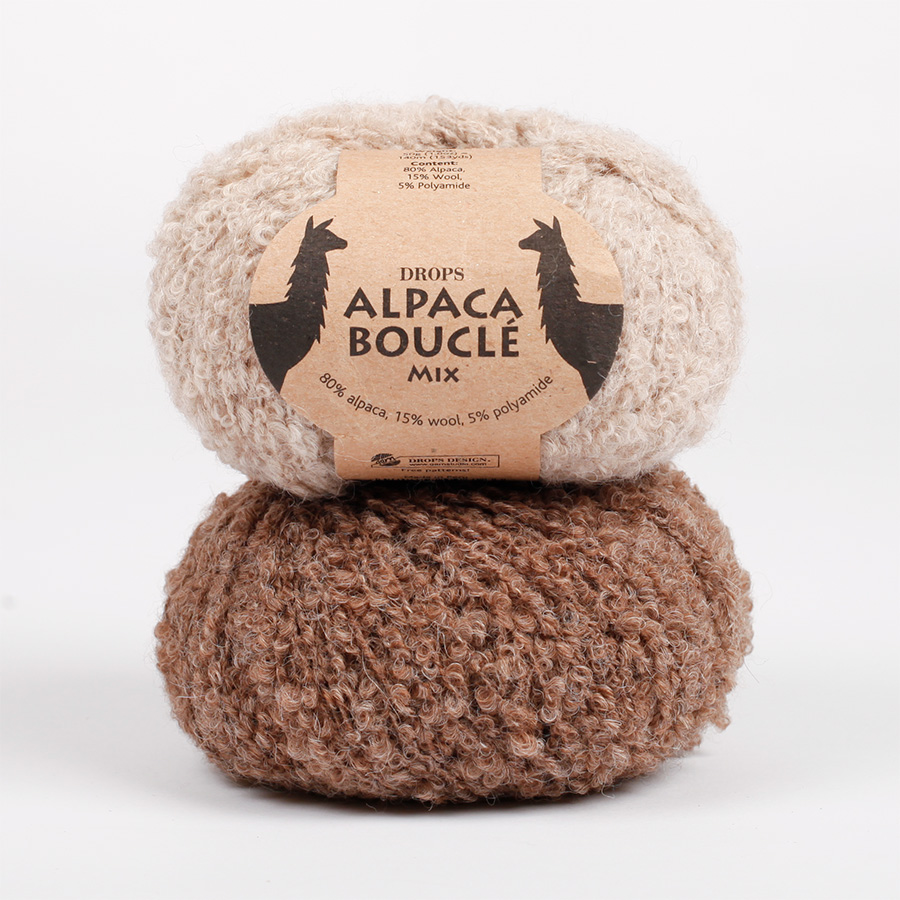
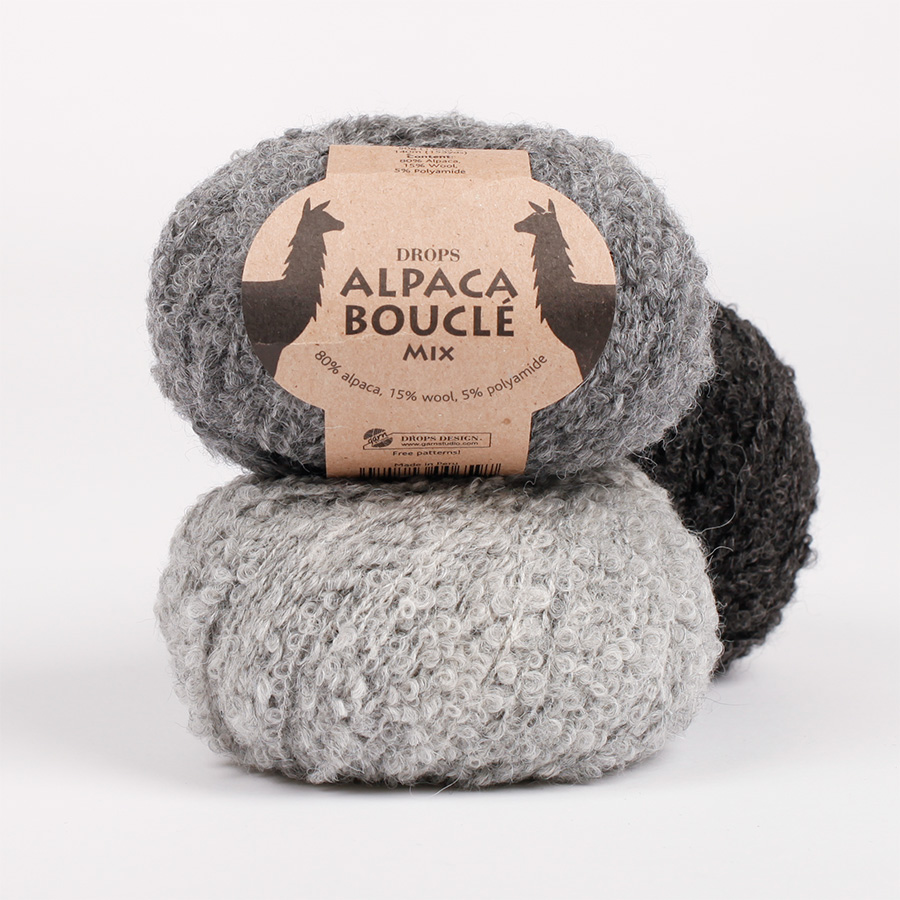
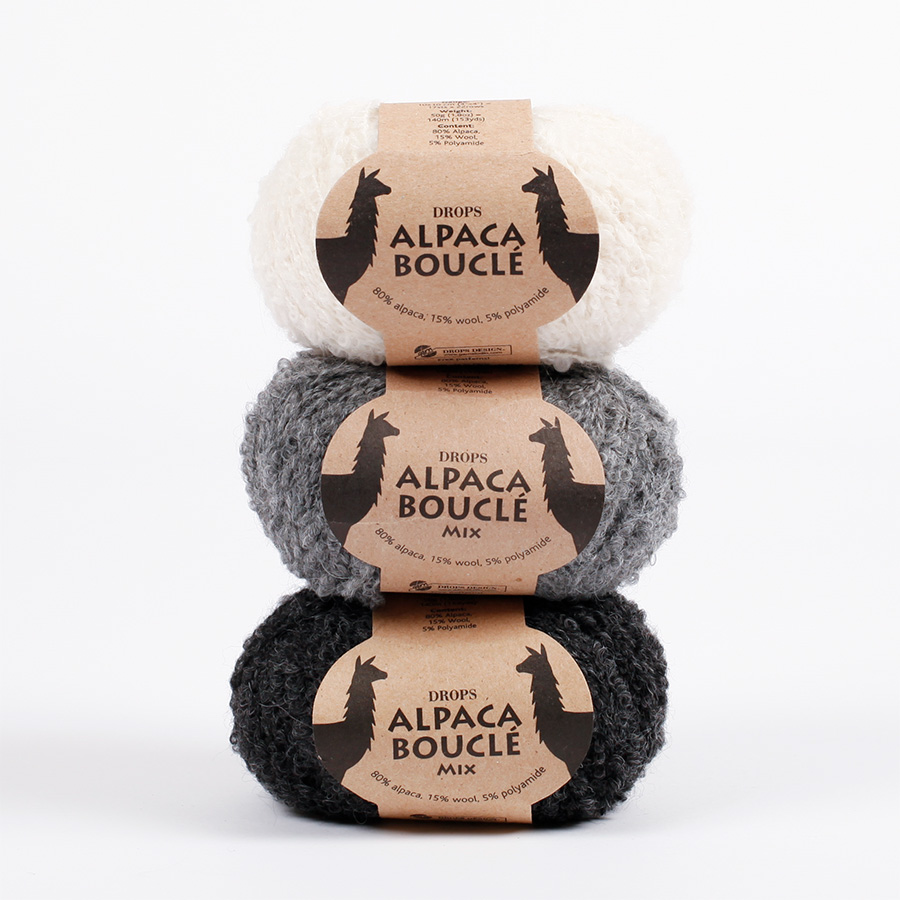
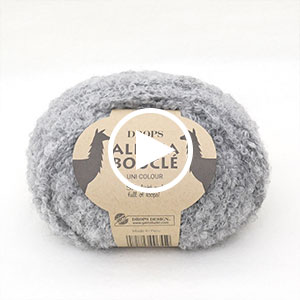

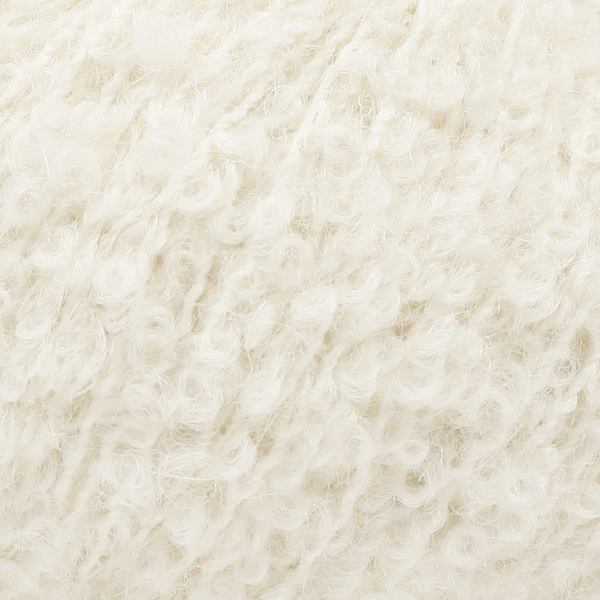





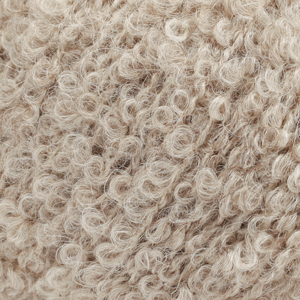
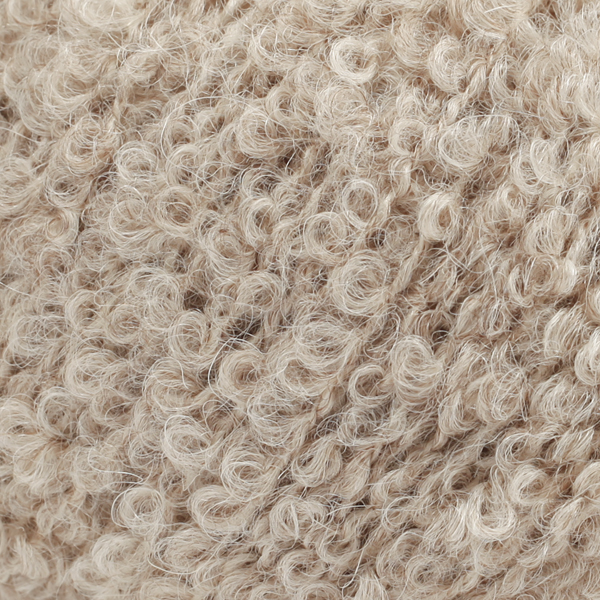







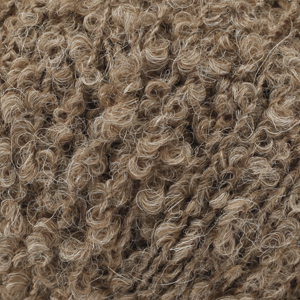
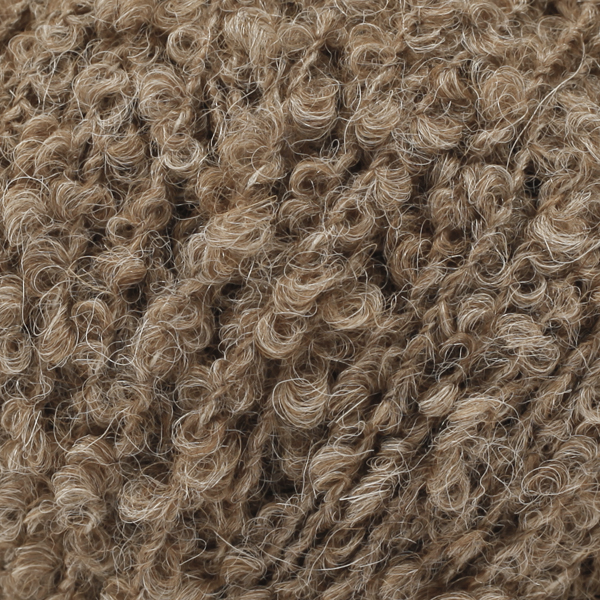





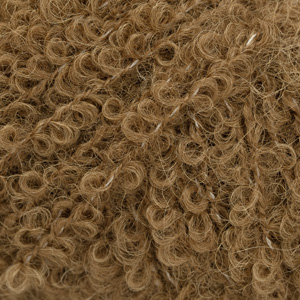
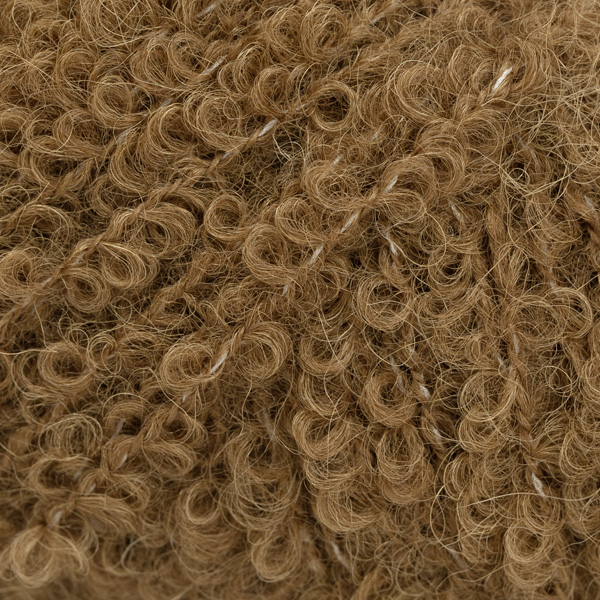
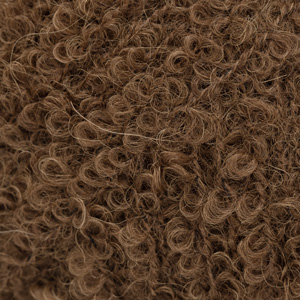
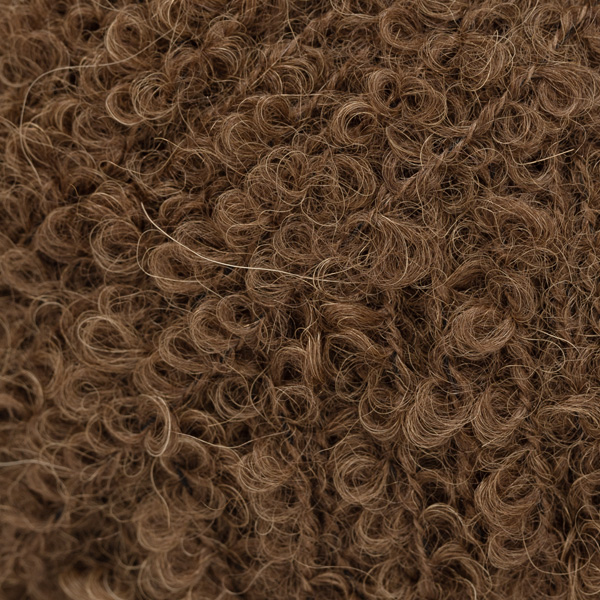




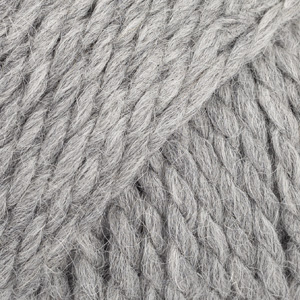

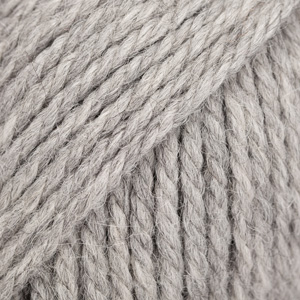
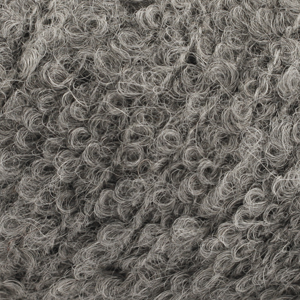
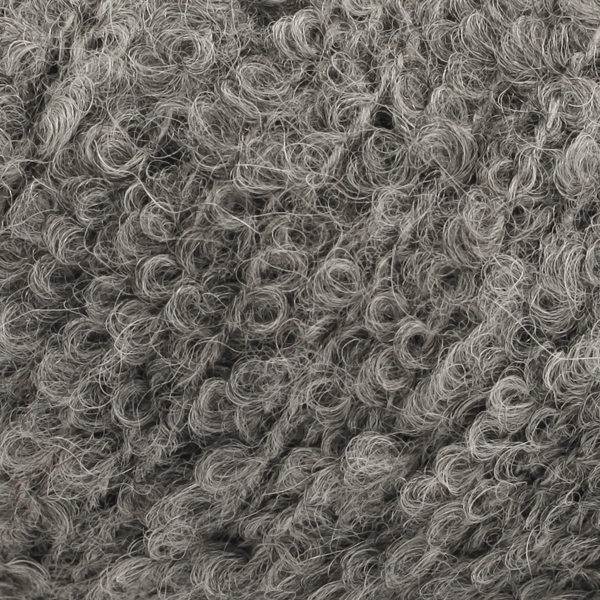






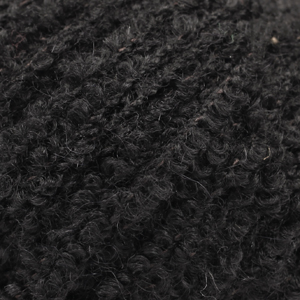
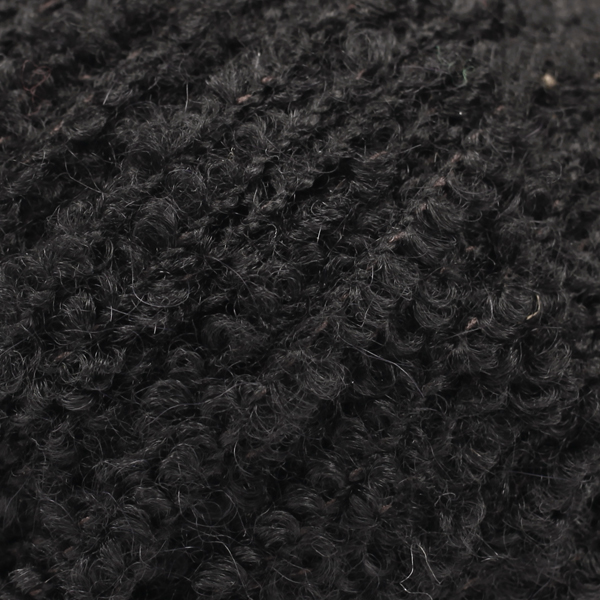















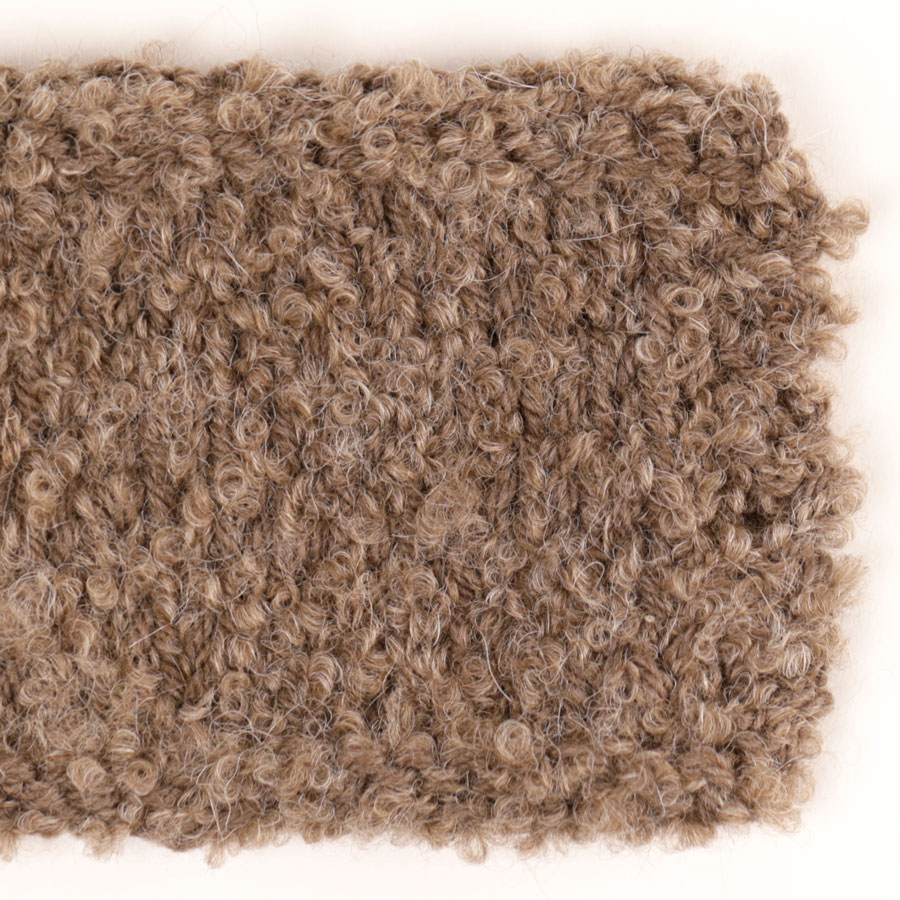
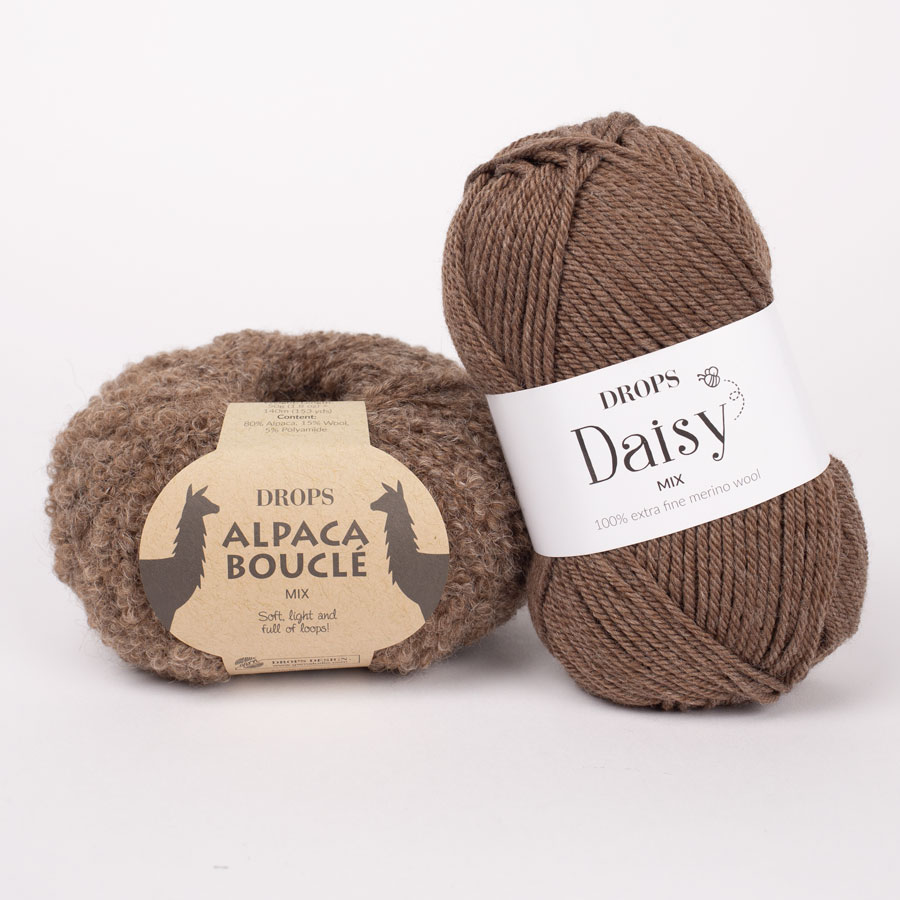

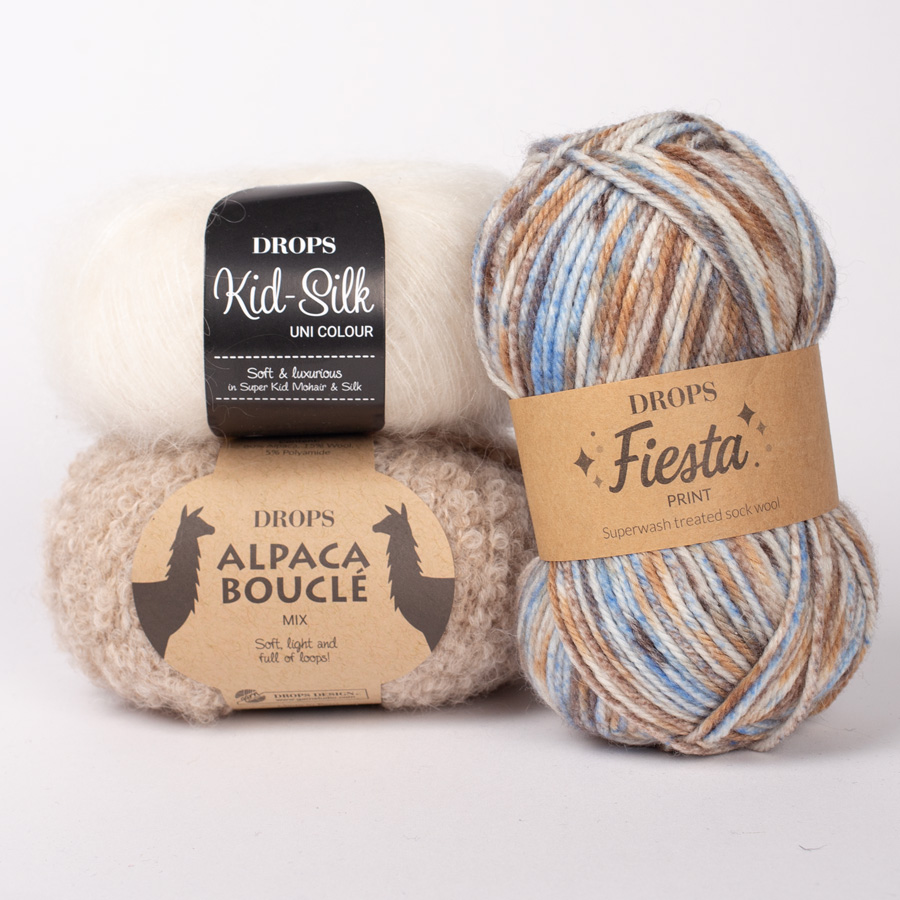
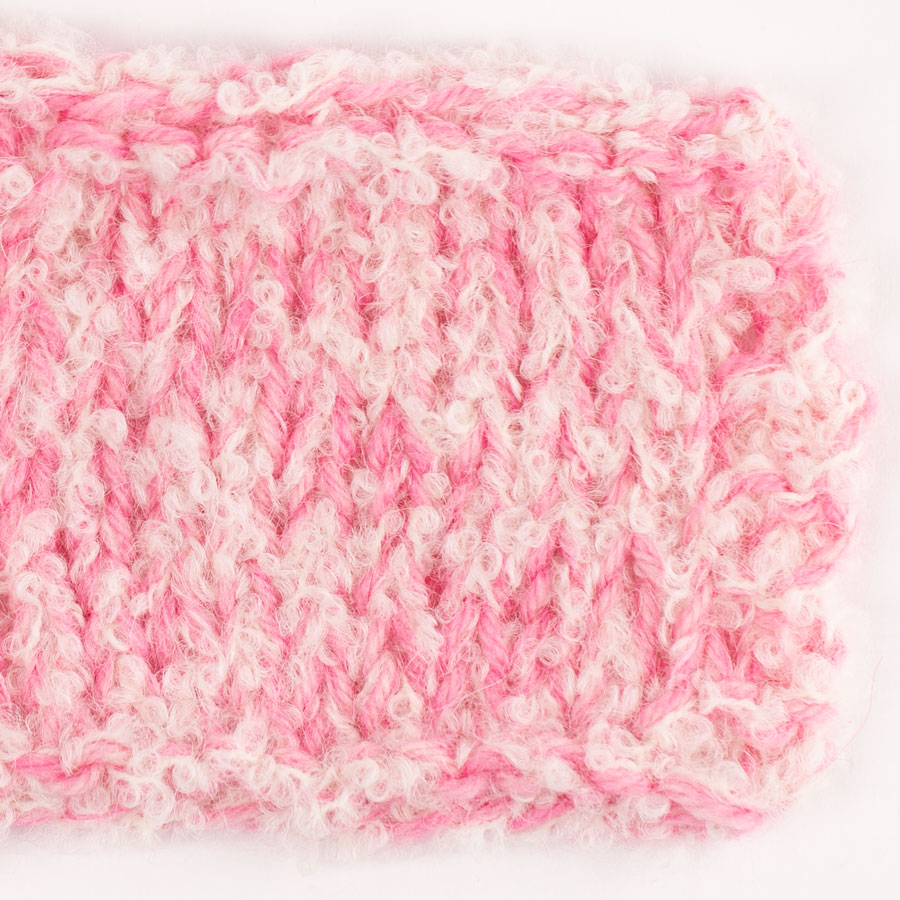
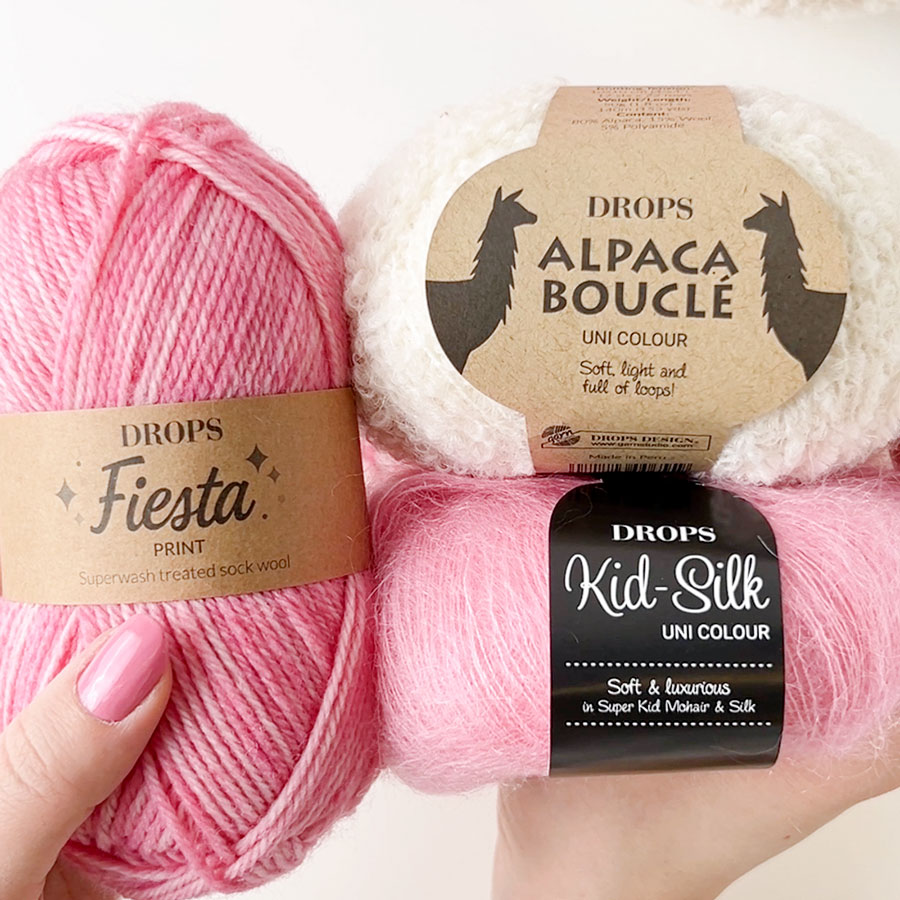
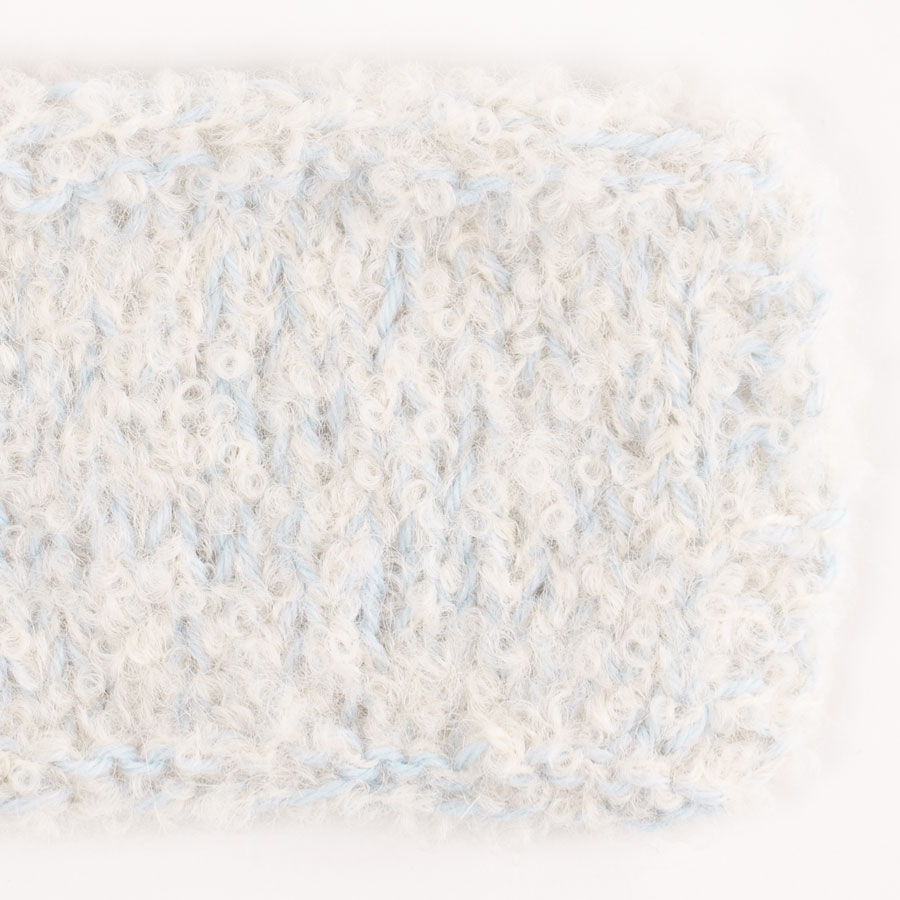
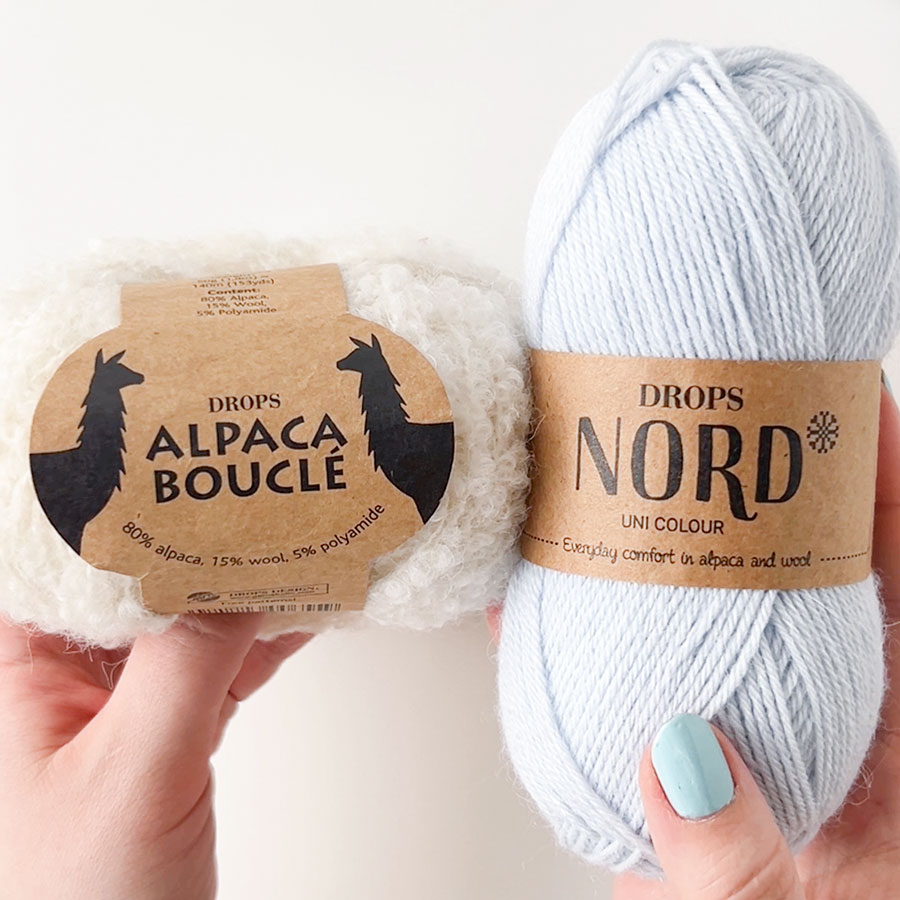
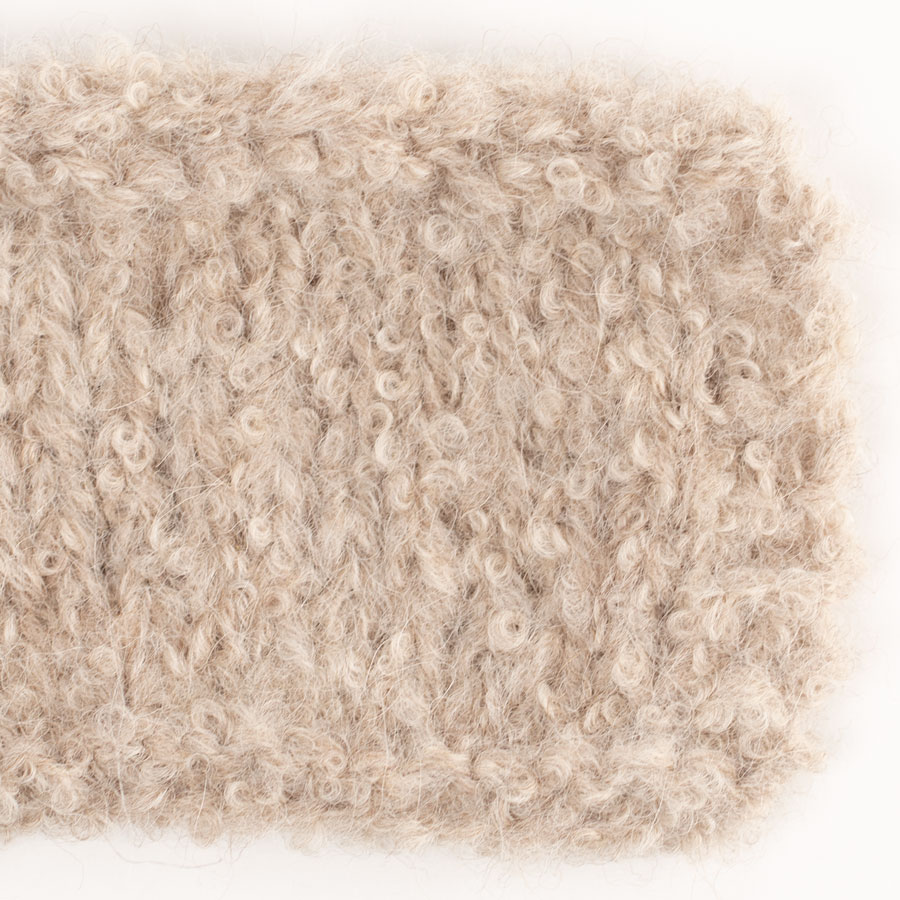
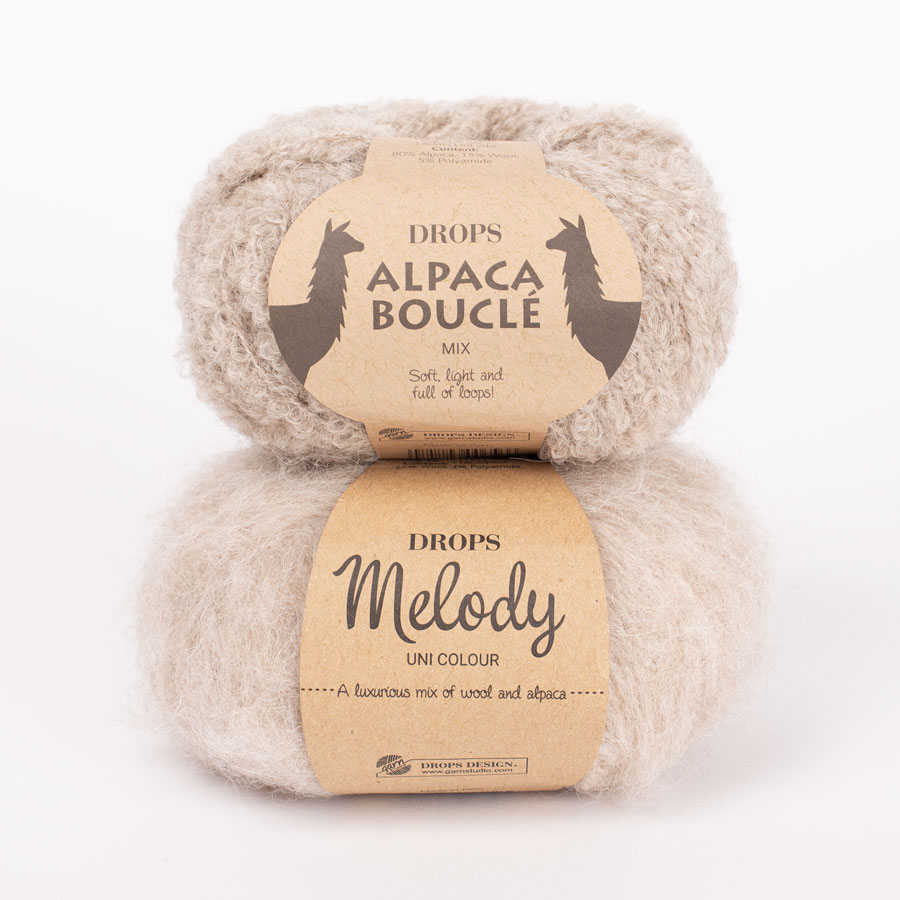
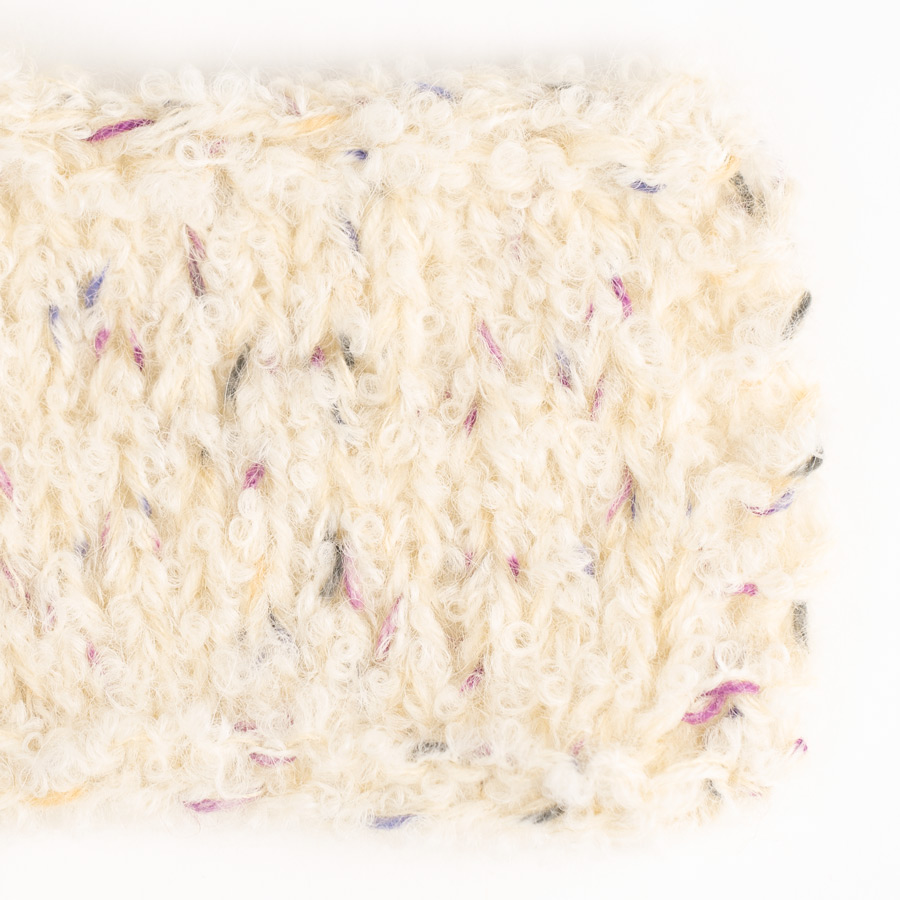
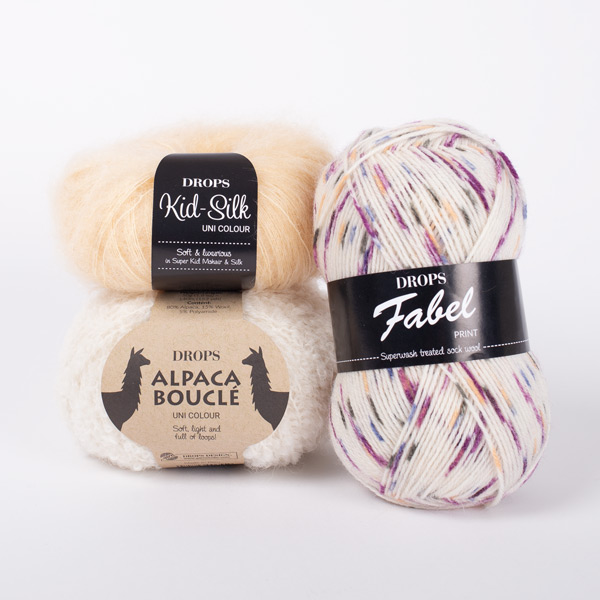
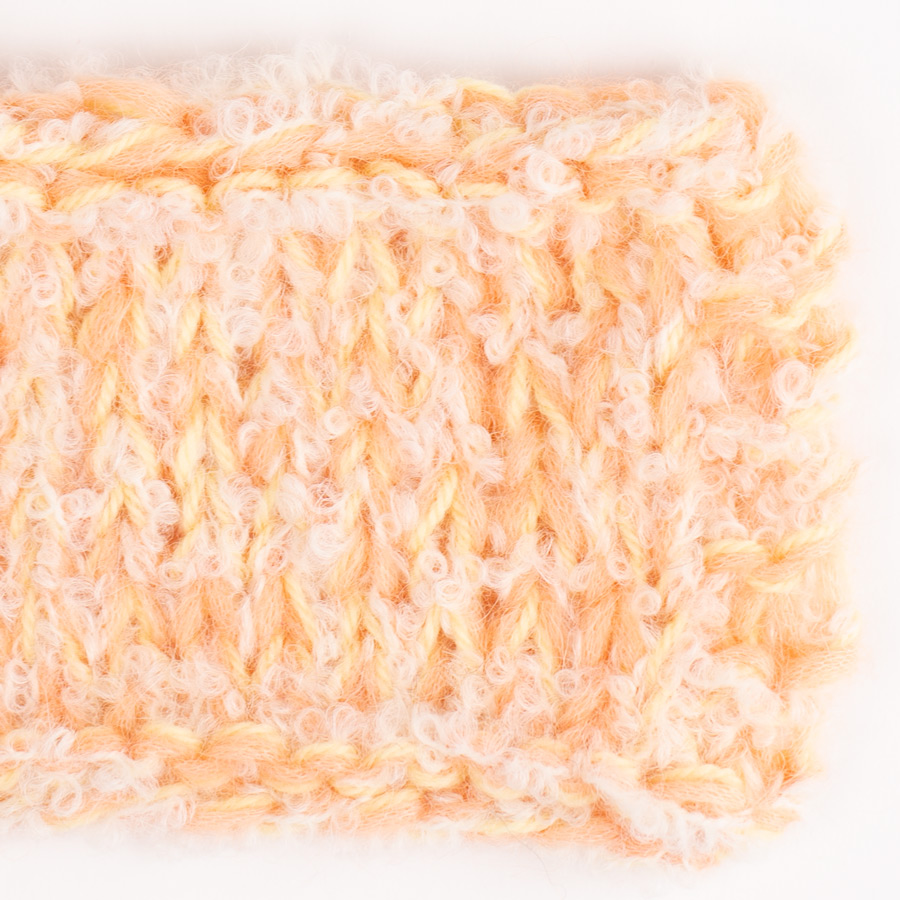
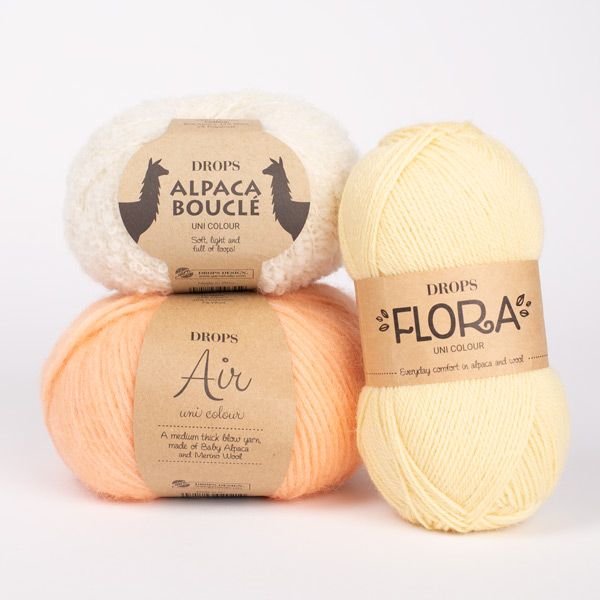
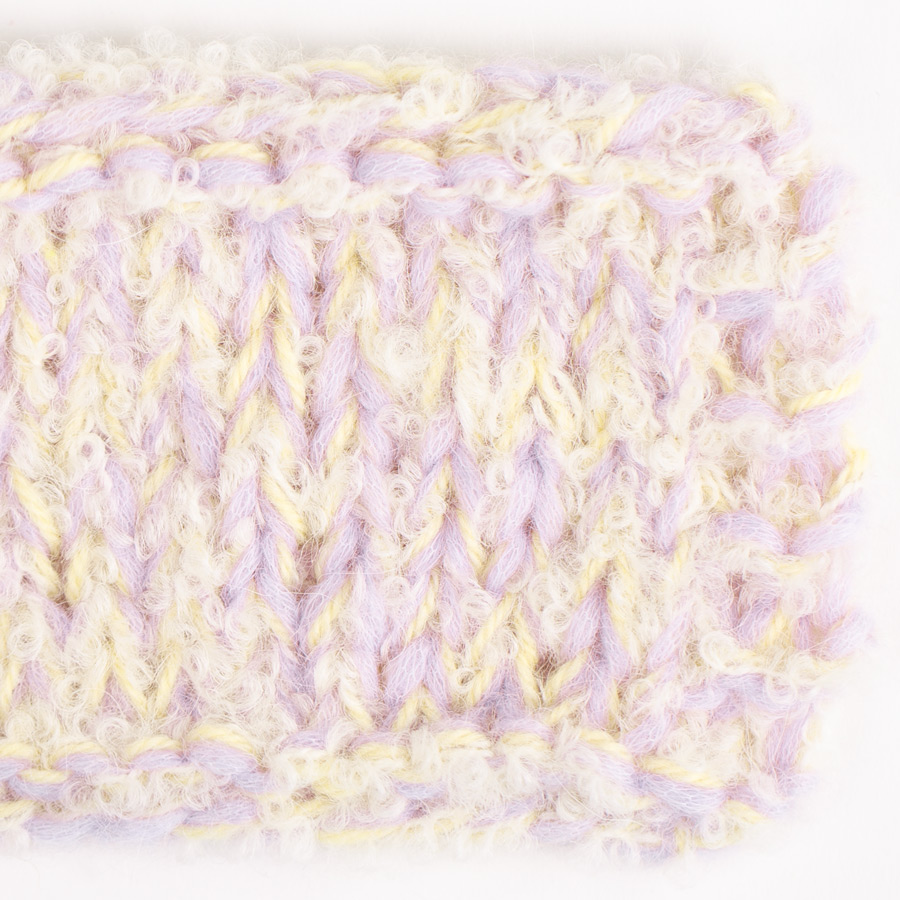
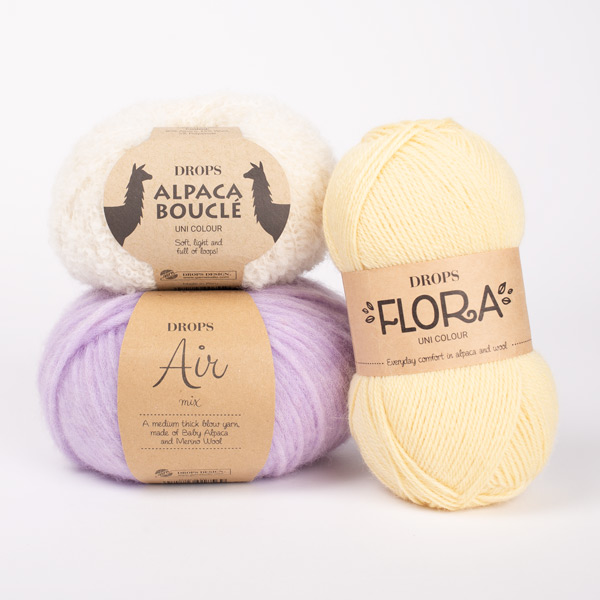

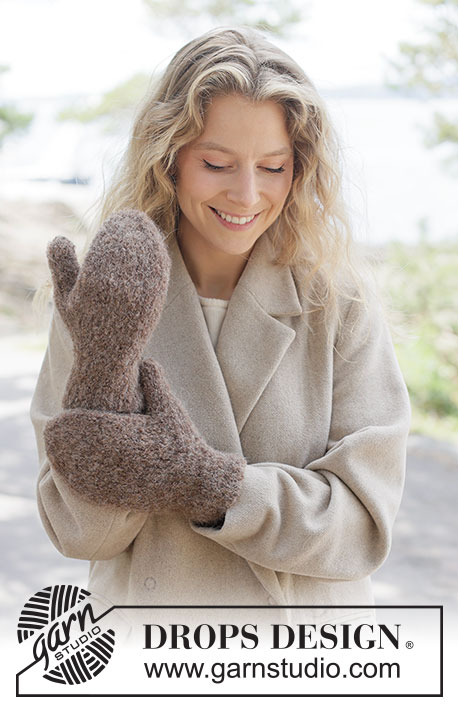





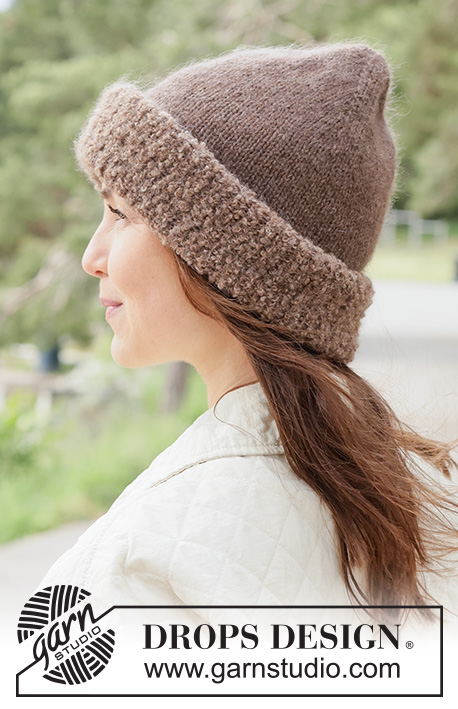






Je me suis fait une veste avec cette laine et elle est super douce, j'adore. Cependant il faut savoir qu'elle n'est pas toujours facile a tricoter : on peut perdre des mailles sans s'en apercevoir, et il vaut mieux opter pour un point simple, endroit, envers, et côtes. A l'usage elle bouloche un peu. Mais elle est si douillette que, malgré tout, je la choisis de nouveau !
13.09.2015 - 15:27